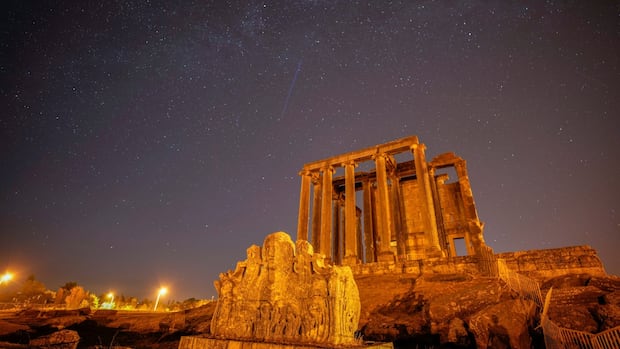There surely won’t be lions or tigers at the G7 summit in Kananaskis, Alta., next month, and officials are doing their best to keep bears away, too.
As many as 5,000 participants are set to descend on the area in a few weeks, and officials are already working to install security barriers and clear out the area of anything that might attract bears to keep both people and the animals safe.
Earlier this week more than 200 local kids began removing buffaloberry bushes from around Pomeroy Kananaskis Mountain Lodge and its staff residences to detract bears from venturing into the area.
The bright red berries are quite popular with bears.
“The buffaloberries haven’t been cleared out of the area in and around Kananaskis Village for about 15 years. So there’s quite a lot of them,” said Trevor Julian, the executive director of Friends of Kananaskis Country.
The non-profit, which primarily maintains trails around the area, was approached by Global Affairs Canada last year for ideas on how to help with the environmental sustainability of the summit.
Removing the buffaloberry bushes was their idea.
“That’s what we’d suggested to them, that it would be a worthwhile activity to do. It would, one, have the potential to reduce human-wildlife conflict, but also to engage the public and students in it,” Julian said.
The students, along with a Scouts Canada group from Calgary, took three days this week pulling the bushes right down to their roots — as the berries haven’t bloomed yet. They have another four days of work lined up for next week, and another three days the first week of June.
“We reached out to schools to see who was interested in participating, doing some service, learning a bit more about the environmental and wildlife conflict,” Julian said.
Bear killed at G8
The efforts to minimize the wildlife-human contact at the summit come after some lessons learned in 2002, when Kananaskis hosted what was then known as the G8 summit, before Russia was expelled.
In 2002, a bear ventured too close to leaders in a tree and was tranquilized.
“They shot [it] so it would fall into a net then be moved to a safe place,” said John Kirton, a political science professor and the director of the G7 Research Group at the University of Toronto.
“But [the bear] missed, fell to the ground and died.”
Officials from Alberta’s Ministry of Public Safety also have plans to erect fencing around bear attractants, as well as electric fencing to keep bears out.
“Wildlife is expected to be present in the surrounding environment, and the primary focus will be on the prevention of any close encounters between wildlife and the event’s key facilities or areas frequented by attendees,” said Sheena Campbell, the director of communications for the ministry.
“Staff have and continue to provide guidance on the development of strict protocols for managing food attractants, ensuring that these attractants are properly stored and disposed of to prevent any accidental attraction of wildlife.”
Julian said delegates will also receive a crash course on wildlife awareness.
“Training the delegates — you know, people who aren’t used to being in bear country where you’re essentially among grizzly bears and black bears — what’s the best things you can do to avoid conflict and then also what you should carry. For example, bear spray if you’re out in the wilderness and things like that,” Julian said.
“So training’s being provided to people around the conference as well so they’re better prepared to deal with those kinds of things.”






